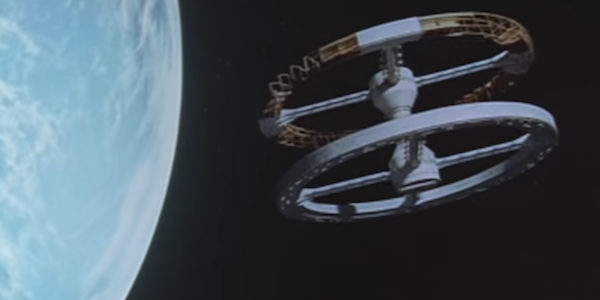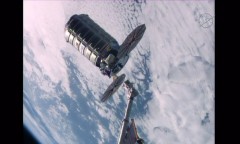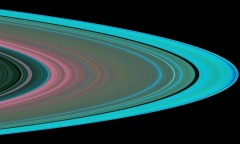By Vishal Goel, | November 26, 2016

In Stanley Kubrick's movie, 2001: A Space Odyssey, the rotating spacecraft creates artificial gravity through centripetal force. (YouTube)
US-based researchers have created an "artificial gravity" exercise device to combat health problems associated with weightlessness that astronauts face during long-distance space missions.
The device, which works like a vacuum cleaner, seals around a person's waist and creates an apparent "weight" on the lower body through a strong suction force so that the person can exercise at his normal body weight. If the device is built and tested in time, it could very well be used during Mars missions.
Like Us on Facebook
There are not many solutions available to scientists to work on to fight health problems astronauts face in space which includes back pain, muscle and skeletal weakness, and fluid pooling in the upper body. In addition to that, astronauts have a hard time readjusting to pressure on their feet and buttocks when they return to Earth (or in the future, land on Mars).
"A centrifuge is probably the best thing we could give the astronauts, but it's very expensive, and there are also some safety issues with having a rotating device on a spacecraft," said Alan Hargens, an orthopedic surgeon at the University of California, San Diego who helped develop the device. According to the Guardian, the lower body negative pressure (LBNP) device is called "an early form of artificial gravity."
Exercising in space without gravity is not the same as exercising on Earth because one becomes almost weightless in space. So astronauts use bungee ropes to work out. But that does not distribute the force on the human body as it happens on Earth.
The human body rapidly adapts to space by shedding muscle and bone mass, said Professor Lewis Dartnell, an astrobiologist at the University of Westminster.
The spinal muscles, buttock muscles, quads, are all used for holding posture against gravity and for walking and thus, the astronauts have to build those muscles up again over time when they come back to Earth.
Hargens and colleagues argue that their device could solve many of the physical problems encountered in space.
-
Use of Coronavirus Pandemic Drones Raises Privacy Concerns: Drones Spread Fear, Local Officials Say

-
Coronavirus Hampers The Delivery Of Lockheed Martin F-35 Stealth Fighters For 2020

-
Instagram Speeds Up Plans to Add Account Memorialization Feature Due to COVID-19 Deaths

-
NASA: Perseverance Plans to Bring 'Mars Rock' to Earth in 2031

-
600 Dead And 3,000 In The Hospital as Iranians Believed Drinking High-Concentrations of Alcohol Can Cure The Coronavirus

-
600 Dead And 3,000 In The Hospital as Iranians Believed Drinking High-Concentrations of Alcohol Can Cure The Coronavirus

-
COVID-19: Doctors, Nurses Use Virtual Reality to Learn New Skills in Treating Coronavirus Patients











